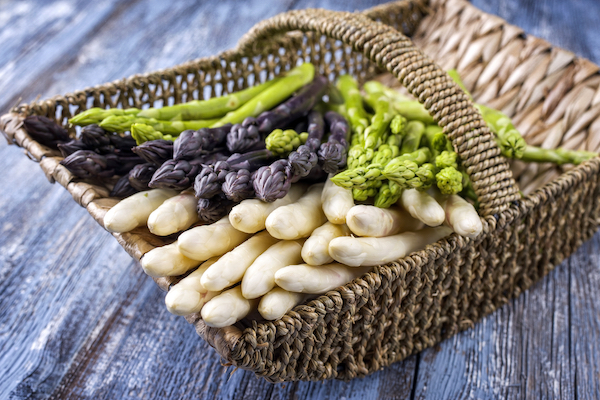French industry unites to tackle asparagus harvest crisis
Asparagus harvest – The 2022 campaign ended sadly for the French sector, as previously reported in an article on Freshplaza. Yet with 20% fewer volumes than the previous year, the issue wasn’t overproduction. Asparagus—especially mid- and late-season—simply struggled to sell, despite good quality. This situation plunged the entire sector into crisis, leading to a sudden halt in production one to two weeks early, and tons of product were destroyed.
In response to this alarming situation, Christian Befve, internationally renowned asparagus expert and director of Befve & Co, gathered all the sector’s players on July 1st in Bordeaux to analyze the situation and find collective solutions. “It’s an idea I’ve had for several years now. But following this campaign, it became an absolute necessity. The next campaign simply cannot unfold like the one we just ended. We all need to come together: independent producers, cooperatives, producer associations, marketers, and wholesalers from all production areas, whether in green, white, purple asparagus or in conventional, HVE, organic, or biodynamic farming. We must analyze the problem and develop a shared vision to bring the sector out of this crisis. Because this is a national problem, not just a matter of production.”

A Highly Anticipated Meeting
The meeting was well received by sector stakeholders: “Some producers drove round trips from Alsace and Lorraine just to attend. Around sixty people participated, even though COVID unfortunately reduced that number at the last minute. I felt genuine positive energy in the room. To my pleasant surprise, while I expected a tense atmosphere at the start, everyone arrived in a constructive mindset. That proves that everyone is ready to work together to ensure the next campaign goes better.”
Analyzing the Asparagus Harvest Situation
While declining consumption affects the entire fruit and vegetable sector, other factors also explain this disappointing asparagus season: “Every year, the French campaign hits a difficult period when Belgian, German, and Dutch asparagus enter the market. This year, that window lasted a full month instead of a week. The quality of these European asparagus was excellent—yet prices were especially low, around €1.40 at Rungis versus the usual €2 from exporters, while French asparagus sold at €4.50.”
Another major issue raised was the sector’s lack of organization, especially poor anticipation in communication. “We realize communication is neglected when the first asparagus arrives. But retailers need three weeks to organize shelf placement for a product. We really need to anticipate and amplify communication, with supermarkets and with consumers.”
Creation of a European Volume Forecasting Observatory
After gathering the French sector, Christian Befve now aims to improve communication across Europe. Hence the idea to launch a European asparagus volume forecasting observatory: “The idea received unanimous support. This is exactly what we need to anticipate problems during the season. The observatory would report expected productivity percentages for the next four weeks in each country, every Monday. For example: 100% when productivity reaches 300 kg/ha/day, 30% around 100 kg/ha/day. The data would come from representative growers in France, Italy, Spain, Germany, the Netherlands, the UK, and Greece. If we had had this tool this year, we could have anticipated the crisis without being forced to halt and destroy tons of product.”
Following this drop in harvest, Befve has already reached out to observers and plans to launch the observatory next season. He is currently looking for development partners and financial backers to bring the tool to life.
Increasing Communication with Retailers
To boost communication with marketers and the public, Christian Befve also proposed creating an information bulletin to detail production specifics per country: “It could include info like start/end dates of harvests, labor costs—€13/hour in France, €12 in Germany (starting next year), €7 in Spain; health standards, number of kilometers traveled by asparagus to measure CO₂ emissions, and even the number of approved pesticides per country. For example: France can use 20 products, Italy 22, Spain 25, Germany 35, and the USA 38. Access to this kind of data could help explain price differences between origins.”
The Beginning of Something Bigger?
This meeting proved to be more than a first step—a true glimmer of hope for better sector cohesion: “The feedback has been very positive. Some companies already held internal meetings to address the crisis. I’ve even been contacted to organize a similar event at European level, during the Asparagus Fair in Karlsruhe, Germany, organized by VSSE, from November 23–24. This clearly shows there’s a real need for coordination in the sector.”
For more information:
Christian Befve
Christian Befve & Co
christian@befve.com
www.befve.com
Publication date: Thursday, August 18, 2022
Author: Aurélie Pintat
© FreshPlaza.fr

